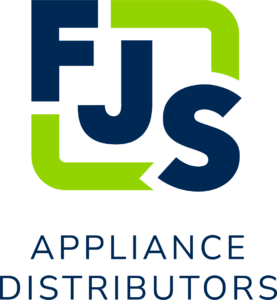Would you believe it if we told you that the average American household completes 8 loads of laundry each week? That’s upwards of 30 loads each month, and over 400 loads of laundry every year. Multiply that by the number of families in your multi-family housing complexes, and the numbers grow quickly. Between water, electricity and time… laundry can be expensive.
Builders and property managers alike want to provide modern, accessible amenities that make a building attractive to current and potential renters. In-unit laundry is a sought-after amenity, but adding appliances in apartments can be a big expense for property managers. The need to attract and retain renters must be balanced with the cost to install and maintain amenities like laundry facilities.
The National Real Estate Investor looked at millennial lifestyle trends and found as they begin to move into urban areas and rent apartments, they look for (and expect) housing options with amenities. Laundry, specifically, has seen a large shift in recent years, moving from the typical coin-operated laundry room, to more efficient in-unit laundry.
“In 2014, 70 percent had laundry in the unit and only 10 percent had laundry rooms; in the early 2000s, 57 percent had in-unit laundry while 33 percent had a laundry room; the remainder had washer-dryer hook-ups only.”
There can be challenges to adding traditional in-unit laundry to buildings, especially in ones that weren’t originally built with these appliances in mind. Construction and labor is expensive. Costs to add vent runs, equip the building for makeup air and re-finish after the appliances have been installed can add up quickly – that is, if you’re using traditional laundry appliances.
Ventless laundry appliances are game changing. In-unit laundry is feasible for most buildings (both new construction, or existing buildings) when you consider ventless laundry as an option.
Because ventless dryers don’t vent, but instead recycle the warm air they create, they save energy and there isn’t a need for expensive construction. These economical machines are a cost-effective solution for small spaces, tight deadlines, or limited budgets. They can also be installed in closets or under countertops since they have minimal hookup requirements.
Everyone can understand the appeal of having in-unit laundry, but for builders and property managers it comes down to offering strong amenities for attracting and retaining residents and increasing cost savings.
What is the investment of adding in-unit laundry?
The total investment of adding in-unit laundry depends on a variety of factors, and each situation is different. Here are some common questions to consider:
- Is an older building being renovated, or is in-unit laundry being spec’d into a new construction project?
- Will the appliances be washer/dryer combos, stackable, or side-by-side units?
- Will contractors be used, or will the install work be done in-house?
- How many units are needed?
Is adding in-unit laundry profitable?
The short answer: yes. Adding in-unit laundry increases property value, increases rent by $50-100 per month on average, and the highly-efficient machines dramatically decrease water and energy consumption costs for residents. Offering amenities like in-unit laundry also increases resident retention, so less time is spent searching to fill vacancies.
What challenges can arise with adding in-unit laundry to an older building?
One of the biggest challenges we see is finding adequate space for the units. If you plan to use traditional laundry units for a building, residents will see increased energy bills, more space will need to be allocated and vent runs will need to be constructed so the machines can properly vent and not cause a fire. Ventless units, however, require less space and no venting, so they can be installed under countertops, or even in closets – saving time, square footage and money for property owners.
These are excellent questions, and at FJS Distributors, we know our multi-housing customers are concerned with both the satisfaction and retention of residents, in addition to your cost savings.
To see the cost savings for yourself, check out our cost comparison chart which compares two leading appliance brands in the ventless and traditional laundry families. We think you’ll be impressed with the results. Please fill out the form below to download.
